
| Home |
 |
| Digital Trunking Scanner Recommendations | Conventional Scanner Recommendations |
| "Zip and Go" Scanner Recommendations | Wide-Band Scanner Recommendations |
| Scanners With Popular Features |
![]()
|
Do you want a simple
scanner or a do-all traditional scanner? |
|
People will
argue if you want performance buy Radio Shack
GRE made RS models and the new
GRE (PSR) models. Better quality sound, faster trunktracking, shorter squelch tails, clearer digital
transmissions, brighter displays, the firmware is easier to upgrade, and the
software available is more reliable.
I've owned both Uniden and RS (GRE) models side-by-side
in 4-6 states (about 2500 miles apart) and in all cases
the RS models perform better receiving the frequencies.
Now that's just my opinion. Actual results depend on your
location, system/channels monitored, terrain, etc., and personal
taste. |
![]()
|
Digital Trunking Scanners |
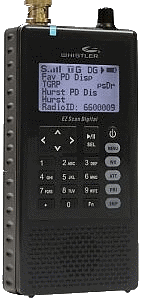 WS1088/TRX-1 |
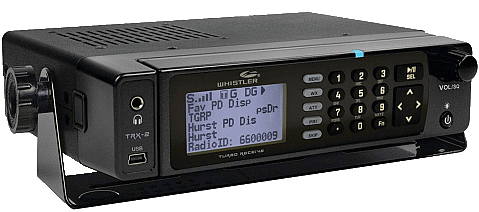 WS1098/TRX-2 |
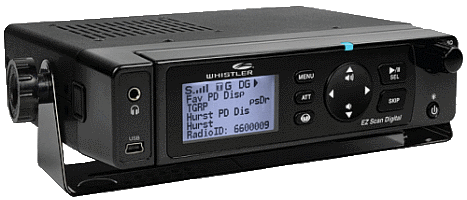 WS1095 |
The Whistler WS1080 (HH) is essentially the same radio as the
GRE
PSR800 with a few new differences. There is an option to change the 'Skip' button
function to 'Lockout', a 4 GB SD card (vs. 2GB), a delay time setting,
Conventional
DMR, a
setting for how many priority channels to check, 200 V-Scanner folders,
'Zeromatic' settings, adjustable signal bar values (in the software), a
'Tune Mode' like the Pro-106/197, and also allows editing of trunked systems and IDs
with the scanner. The backlight is just as bright (really bright) but a bit more purplish.
|
|
Pros- The 436HP is a hand-held version of a combination of the
BCD396XT and the
HP-1 with better FM filtering.
They both now have paid upgrades for DMR, NXDN,
and ProVice-each sold separately. The 536HP has all the features of the
BCD436HP in a base/mobile version that has
the alert LED ring around the scroll control and a wi-fi dongle that allows connectivity to
your smartphone or tablet. Support for
Phase II TDMA
and
Motorola X2 TDMA and now a paid
upgrade for
ProVoice ($50). 100 quick keys for Favorites Lists, Systems, Sites and/or Departments.
Includes most of the features from the BCD396XT plus the
Radio
Reference Database for the US
and Canada on a 4 GB
microSD card, allows you to
select systems by zip code, GPS coordinates, or 'auto locate'. Location
control can filter sites and departments with a range control. Selectable
services types to scan,
LED alert light, a 'Discovery' mode that will
log new frequencies/IDs not found in the database,
encryption muting,
per channel delay setting, included software, up to 256 Favorites Lists,
recording, playback, and instant replay for scan, search, Close Call,
and Tone-Out modes,
number tags for Favorites Lists/systems/channels,
64-character alpha tagging,
GPS compatibility,
selectable
startup configuration,
temporary and permanent "Avoids",
signal meter,
Multi-Site Trunking,
radio IDs,
I-call IDs,
Motorola
status bits,
NAC,
CTCSS/DCS tone codes, weather alert/priority,
support for
EDACS ESK
systems,
priority DND, an
adjustable priority check interval with an adjustable number of channels
to be checked, priority IDs
with
Preemptive Priority ID Scanning
on Motorola analog systems,
3 'Search
Keys' that allow you assign any (1) custom
or service search, 'Close Call Only Mode', or a Tone-Out search to,
scan/search resume;
up to 30 sec. scan/search delay with up to 10 second negative delay,
Military air, adjustable volume offset for each channel,
repeater
reverse,
'Quick search,
broadcast screen with 10 custom screen bands, 10 custom search
bands,
IF (intermediate frequency) exchange,
Close Call
with DND and
Close Call Temporary Store, a low/middle/high brightness level for
the display, computer interface, adjustable charge time for the batteries (1-14 hrs.),
and
Fire Toneout
with
Search
now with 32 slots. Future-536HP: a trunked system
analyzer that includes a reception status graph, an activity chart and
log, LCN activity monitor, talkgroup converter, LCN channel finder, a
Bandscope Mode,
a frequency power plot, and a raw data output. |
|
Pros-
New versions of the XT models. The BCD996P2 is
basically the same scanner and features as the
BCD996XT but will receive P25 Phase 2 and X2-TDMA protocols along
with the 325P2. They both now have paid upgrades for DMR, NXDN, and
ProVice-each sold separately. The 325P2 has the bigger display of the
BC125AT, only an orange backlight, and a BNC antenna connection but
missing the keypad light, the 'Adjust Audio AGC' feature,
1240-1300Mhz range,
and only uses 2 batteries or USB external
power (adapter required for AC/DC).
The 'Function' and 'Menu' buttons are now on the keypad vs. on the left
side for the BCD325P2.
Both the 325P2 and 996P2 have a mini USB
serial port instead of the old 4-pin port, 'Set Serial Port' has been
changed to 'Set GPS Baudrate', and there are no preprogrammed systems.
25,000 total channels/500 systems/500 IDs per system,
Scan with Search,
alpha tagging, the ability to number any
system/channel/search (from 0-999), 7 display colors (996P2 only-blue,
red, magenta, green, cyan, yellow, and white),
visual alerts (flashing display),
changeable default receive bands,
GPS compatibility,
dynamic memory,
selectable
startup configuration,
a
Bandscope Mode,
signal meter, battery meter,
500 (250
temporary + 250 permanent) search lockouts,
Multi-Site Trunking,
radio IDs,
I-call IDs,
Motorola
status bits,
NAC,
CTCSS/DCS tone codes, weather alert/priority,
support for
EDACS ESK
systems,
control-channel data output,
an adjustable priority check interval with an adjustable number of
channels to be checked,
priority IDs with
Preemptive Priority ID Scanning
on Motorola analog systems,
priority plus IDs,
priority plus scanning, 3 'Search
Keys' that allow you assign any (1) custom
or service search, 'Band Scope Mode', or a Tone-Out search to,
scan/search resume;
up to 30 sec. scan/search delay with up to 10 second negative delay,
Military air, adjustable volume offset for each channel,
repeater reverse,
autostore,
'Quick search,
broadcast screen with 10 custom screen bands,
IF (intermediate frequency) exchange,
Close Call
with DND and
Close Call Temporary Store, a low/middle/high brightness level for
the display, computer interface/control, adjustable charge time for the
batteries (1-16 hrs.), EDACS
and Motorola
patch tracking,
and
Fire Toneout
with
Search. |
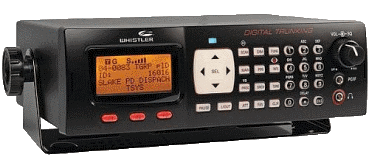 WS1065 |
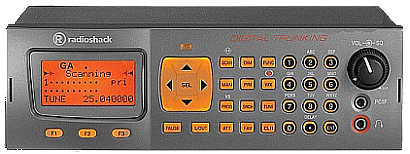 Pro-652 |
|
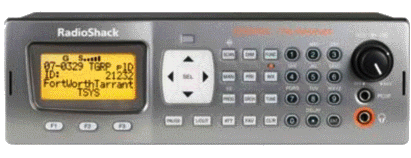 Pro-197 |
 PSR600 |
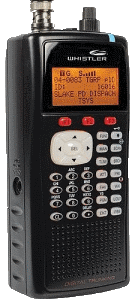 WS1040 |
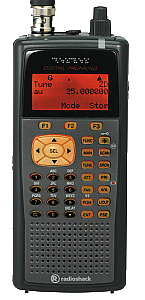 Pro-651 |
 Pro-106 |
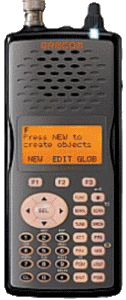 PSR500 |
|
Pros-
Object Oriented Memory
with 22 Scan Lists (20 regular lists,
a Favorites list, and Skywarn list), 5 way navigation
key to access special modes and programming options,
Virtual Scanner Memory Management system; One V-Scanner folder can
hold up to 1800 objects, meaning any combination of talkgroups,
conventional channels, limit/service
searches, and trunking systems; 21 folders;
about 37,800 objects,
Multi-Site Trunking
with option to look for the site with the best
received CC decode rate,
700MHz and 380MHz trunking, Military air, computer
interface and control, QuickText allows you to program insertable text
for tagging, object hit counts,
FlexStep allows channel entries within 1.25 KHz steps,
support for
EDACS ESK
systems,
NAC
programming,
CTCSS/DCS tone codes,
digital
AGC,
weather alert/priority, per channel or global attenuation,
ID delay, priority IDs,
patch tracking,
the
repeater finder
tool, pre-programmed systems,
Wide/Narrow/SCAT EDACS,
I-call IDs,
radio IDs,
'any' color LED alert,
audio alerts, signal strength meter, battery meter,
favorites scan list, 'Expert'
settings, 'multiple' priority channels,
Scan with Search,
Spectrum
Sweeper/Signal
Stalker II, limit, service, and
Stalker/Sweeper searches can be programmed as objects,
'Tune' search,
temp/permanent lockout,
Zeromatic search tuning,
control-channel
data output, TCXO (temperature
controlled crystal oscillator)
for frequency stability,
and firmware
upgrades. Many extra 'fine tuning' settings for scanning and
especially digital trunking. |
|
(U)BCD396XT(HH)/BCD996XT(Base/Mobile): |
![]()
|
'Zip and Go' Scanners - All you have to do is enter your zip/postal code and the scanners will pull frequencies from the onboard database to scan. Then all you have to do is figure out how to operate them. Software is required to fully program the scanners. The new generation of memory on micro SD cards isn't as reliable as the built in memory of older scanners and has been know to go corrupt. A backup card is recommended. |
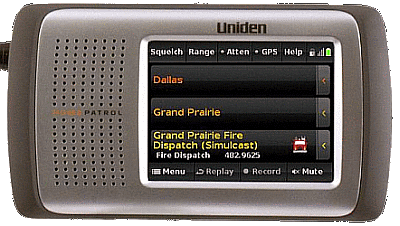 HomePatrol-1 |
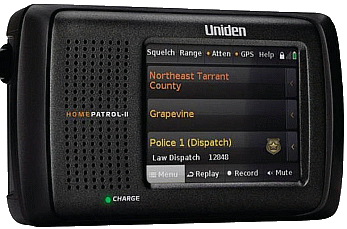 HomePatrol-2 |
|
Pros-
Not like a handheld or base model, it's more of
a desktop scanner that sits on an included stand. It has a 3.5-inch
diagonal color touch-sensitive LCD screen.
The HomePatrol-2 supports
digital
Phase II TDMA and
Motorola X2 TDMA. Contains the
Radio
Reference Database
for the US and Canada on a
microSD card, allows you to
select systems by city, county, zip code, or auto locate. Location
control can filter sites and departments with a range control.
Selectable services types to scan, up to 256 Favorites Lists,
recording/playback of received transmissions,
GPS compatibility,
37-character alpha tagging,
temporary and permanent lockouts,
signal meter, battery meter,
Multi-Site Trunking,
adjustable delay,
ID delay, programmable
radio IDs,
I-call IDs,
Motorola
status bits,
NAC
programming,
CTCSS/DCS tone codes, weather alert,
audio channel alerts, support for
EDACS ESK
systems,
control-channel data output, Military air, adjustable volume offset
for each channel, auto power-off with weather alert or clock standby,
digital
AGC,
per channel or global attenuation, site name in display,
100 cps scan rate,
included software,
and
option to export a kml file to programs like Google Earth.
|
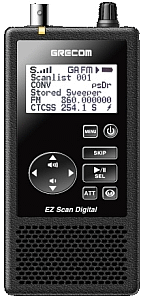 PSR800 |
 Pro-668 |
|
Pros-
Motorola X2 TDMA,
and
Phase II TDMA support.
Whistler has now offered paid DMR
upgrades but they will have no NXDN capability.
Contains the
Radio
Reference Database
for the US
and Canada on a
SD card, option to select systems by
city, county, or zip code, and also select service types (US only);
simplified keypad more like an MP3 player, 201 scan lists (200 regular lists plus a Skywarn list),
20
scan sets, 200
virtual memories with
V-Scanner II, an alert LED with
flash pattern alerts, audio alerts,
recording/playback of received objects, auto
power-on (HH),
4-way navigation key to access special modes and
programming options,
Multi-Site Trunking,
digital
AGC,
NAC,
encrypted talkgroup filtering, power-on
password, 700MHz and 380MHz trunking, Military air,
FlexStep allows channel entries within 1.25 KHz steps,
support for
EDACS ESK
systems,
CTCSS/DCS tone codes, weather alert/priority, per channel or global
attenuation, site name in display, 70 cps scan rate, 80 steps/sec.
search rate, ID delay, priority IDs,
I-call IDs,
radio IDs,
patch tracking,
Wide/Narrow/SCAT EDACS, signal strength meter,
battery meter, 'multiple' priority channels,
Spectrum
Sweeper,
Zeromatic search tuning,
control-channel data output,
IF/Discriminator Out, and included software.
|
|
Pros-
A 'mini' handheld
Object Orientated
Memory
scanner with some outstanding features that contains the
Radio
Reference Database (US only)
on a 2 GB standard SD card or room for about
10 million objects, analog
trunking, 51 Scan Lists (50
regular lists plus a Skywarn list), 4-way
navigation key to access special modes and programming options,
Spectrum Sweeper,
Multi-Site Trunking,
Virtual Scanner Memory Management system with 200
V-Scanner II folders,
simplified keypad more like an MP3 player, weather alert/priority,
CTCSS/DCS tone codes, audio alerts, visual alerts (flashing
display), Military air,
support for
EDACS
ESK systems,
Multi-Site Trunking,
adjustable priority sampling interval, signal
meter, private/radio
IDs,
I-call IDs,
temp/permanent lockout,
ID delay,
patch tracking,
75 cps scan rate, 85 steps/sec. search rate,
and included software required to update the
database and firmware. |
![]()
| Analog Trunking Scanners -These are all rebandable, trunk LTR, VHF, and UHF systems, trunktrack and scan (conventional) at the same time, have attenuation per channel, AFS/Decimal EDACS ID display, power-on resume, weather alert, changeable receive modes per channel, alpha-tags, CTCSS and DCS, ID delay, CB band, Motorola Control Channel Only programming, and have a computer interface and/or control. |
|
BC346XT(HH): |
![]()
| Conventional Scanners |
|
|
SC230(HH): |
![]()
| Wide-Band Scanners |
|
|
Icom IC-R6(HH): |
![]()
| Scanners With Popular Features |
|
| Conventional Scanners With Popular Features-under construction |
|
| Wide-Band Scanners With Popular Features-under construction |
|
![]()
| Last updated September 06, 2024 |